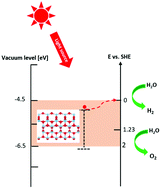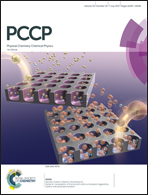A reconstructed anatase (001)-1 × 4 surface and its reactivity
Abstract
An anatase TiO2(001) surface has shown great potential as an ideal and powerful photocatalyst due to its chemical stability, nontoxicity, and high reactivity. However, the fundamental atomic structure of the reconstructed anatase (001)-(1 × 4) surface is still under debate, which greatly impedes further exploration of its chemical activity. Herein, the anatase (001)-(1 × 4) surface reconstruction and the photocatalytic reactivity have been extensively studied using an effective surface structure searching method in combination with the first-principles calculations. Our study reveals that there exist two stable (1 × 4) reconstructed surfaces, i.e., the previously proposed “ad-molecule” (ADM) and oxidized ridge (OR) surface structures, and their simulated STM images are in good agreement with experimental observations. Moreover, we find that the ADM surface has superior photocatalytic reactivity to the OR surface and a small number of water can be dissociated at the terrace at one water monolayer coverage, which has never been found before. These findings can not only be applied to solve the experimental controversies about the atomic structure of the reconstructed anatase (001)-(1 × 4) surface but also provide a theoretical basis for exploring the intrinsic properties of the surface.



 Please wait while we load your content...
Please wait while we load your content...